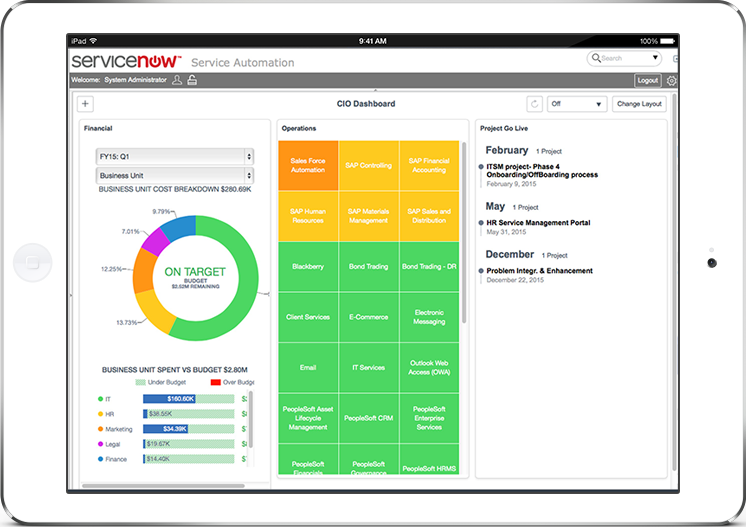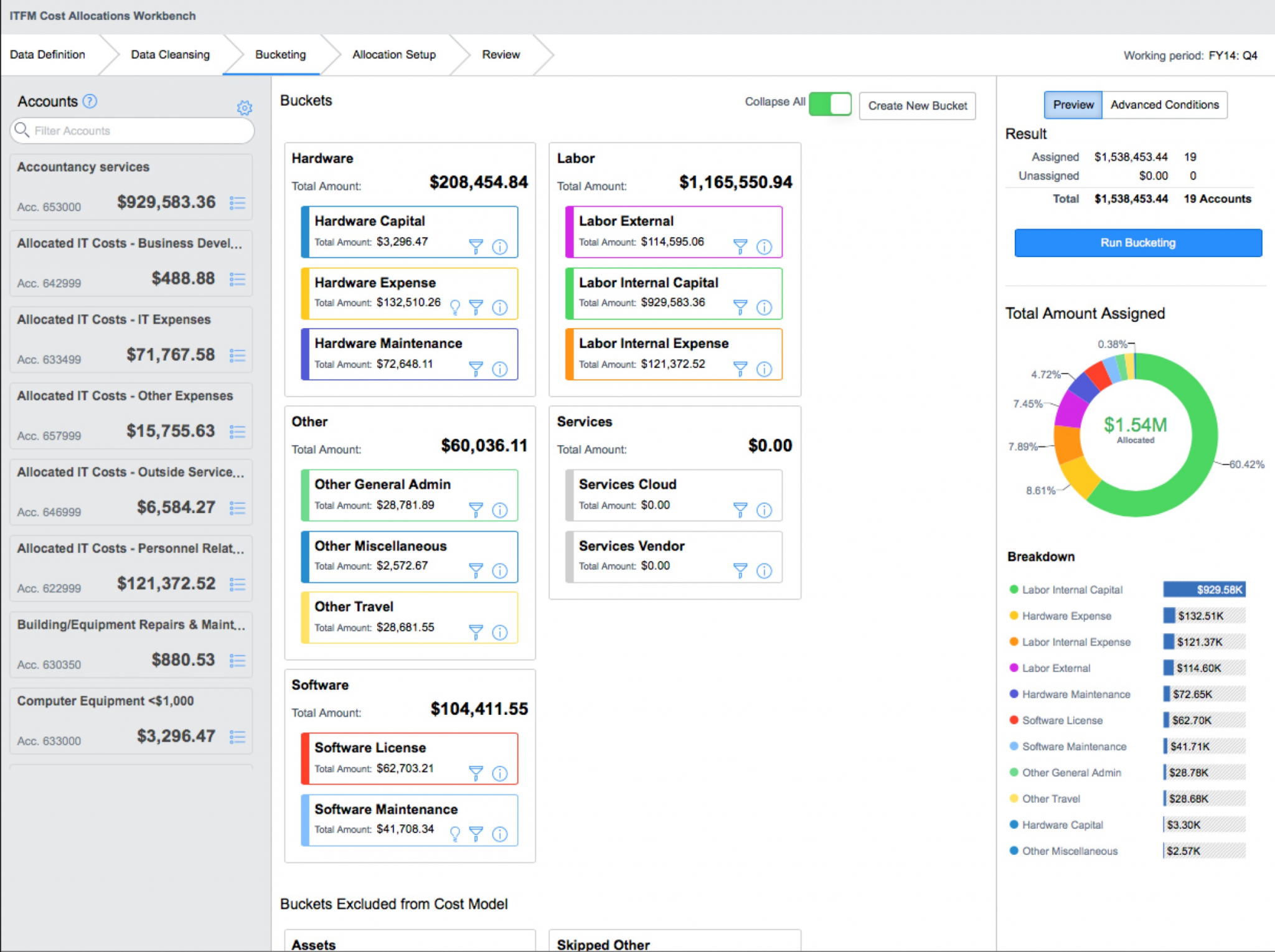If you’ve worked in the IT sector in any capacity over the past few years, you would have definitely come across the name ServiceNow. The company burst onto the scene a few years ago with a Software-as-a-Service (SaaS) product that helps companies streamline their IT service management (ITSM). The point of ITSM is to provide a single point of contact for both users and IT developers. If you’ve ever worked in customer support, one thing you would have noticed is the absolutely outdated legacy software that’s both difficult to work with and understand. What ServiceNow did was bridge the gap between the user-friendly software we are used to using in our daily life and the completely outdated customer support and service-management tools.
Though a lot of people view ServiceNow as a SaaS company, which it is, ServiceNow is also adopting the Platform-as-a-Service (PaaS) model as it provides much needed versatility when creating custom applications. The ServiceNow team has already revolutionized the ITSM sector by providing a highly innovative and “nimble” platform that allows customers to develop and build out-of-bundle functionality. ServiceNow succeeded in fully automating IT operations by bringing all aspects of it under one record.
Taking the industry by storm
Started in 2003 as GlideSoft Inc., ServiceNow reported annual revenue of $13 million in just four years. But from $13 million in 2007, it grew wildly and posted $1 billion in revenue in 2015, with close to a 30 percent share of the Global 2000 Organizations. What exactly is it that has caused this crazy kind of growth, and why didn’t anyone else think of it first? Well, that’s exactly what everyone wants to know and the answer is this: No one was really paying attention to the ITSM sector, and the leading companies were just comfortable thinking that their position was secure. The IT industry was used to getting the run around from half-baked software that needed a month-long course just to figure out how to use it. By effectively consolidating a bunch of outdated tools into one single cloud-based platform, ServiceNow has become “the name” in ITSM.
Taking over the world

We are used to having on-demand applications, with frequent updates to resolve our issues since companies like Google and Facebook have set the benchmark as to what a good end-user experience needs to feel like. ServiceNow brought that same professionalism to the ITSM sector. Ever since they’ve taken over the ITSM sector, they have set their goals and standards much higher.
From the pre-cloud days, when ServiceNow was just a SaaS, to the all-encompassing platform it has become today, one thing has remained constant, and that’s the constant innovation. Though their model was just a SaaS back in 2004, it is now a “flat” platform in which all application modules access the same data model and run on the same code base. This “flat” feature makes this platform ideal to be adapted to changing business requirements and ITSM processes. This same feature also means that it can easily be extended beyond the ITSM sector.
Everything-as-a-Service
From SaaS to PaaS, and now … EaaS? In 2015, ServiceNow unveiled its new slogan, “Everything as a Service.” With a platform that can be customized to do anything, it’s not really surprising that they’ve adopted that slogan. But considering the big impact they’ve had on the ITSM sector already, it also puts software developers around the world on notice. “We’re coming for everything” might also be their motto, because ServiceNow plans to have their platform support everything from HR to finance to marketing to legal, as well as all other departments of the enterprise.
Human Resource Management-as-a Service
The human resource department is often the most overworked and understaffed department in organizations, and very often the “most-hated” department among co-workers. The reason is the lack of integration with the other departments, and this often leads to a rather large communication gap. Many employees who have had to contact HR with any issue whatsoever often say that the first impression they get is that HR has no clue what they’re talking about. Cloud-based human resource management takes care of all these inefficiencies by having HR interact with employees and manage all other human resource duties on one single platform. This allows employees to handle most of their own queries on their own and frees up a lot of time for the overworked human resources staff.
A big step toward being the ultimate HR solution is the integration of popular management software “Workday” into ServiceNow’s platform. Workday is a cloud-based financial and HR management tool that comes from the same people who made PeopleSoft. A long story short: After selling PeopleSoft to Oracle for close to $10 billion, the former owners decided they would go ahead and design cloud-based HR management software. The advantage it has over legacy systems like PeopleSoft is the lack of any on-premise hardware and infrastructure as well as the fact that everyone is always using the latest version.
ITSM to ITFM

One sector that could really use some automation is the finance sector. With a huge number of people adopting mobile and online banking, this has left many enterprises to cope with massively complex IT systems that are a combination of legacy systems patched along with modern updates. ServiceNow has branched out from ITSM to IT financial management. Though ServiceNow has made it possible for third-party financial reporting tools (like Workday) to be integrated into its platform, the main selling point is that it allows users to monitor and analyze in detail expenditures incurred by each department. This kind of detailing is valuable to businesses when addressing their executives, especially in regard to financial management.
Spreading to every sector
Health and education are two more sectors that are understaffed, overworked, and grossly inefficient due to the legacy systems in use. In many cases, they are still reliant on human beings and spreadsheets. This has changed since ServiceNow made it the goal to streamline workflow of every industry in the enterprise. Government officials as well as health and education workers are picking up on this. ServiceNow is used throughout the County of San Mateo, Calif., in all 28 Departments. It’s not only the central ticketing system, problem management, change management, event management, knowledge base, and asset management solution, but it is also used as request management for all departments. The University of Warwick, one of the UK’s leading universities, uses ServiceNow to deliver efficient IT service to staff, students, and researchers. The functional scope has grown from not only incident and problem management, but also service catalogue requests, CMDB and change management, and it has increased use of self-service. Drugmaker AstraZeneca uses ServiceNow as an ITSM solution for its 5,1000 employees.
Much more than just ITSM
Carhartt, a popular clothing manufacturer, used the “CreateNow” feature of ServiceNow to build a custom app to assist with new retailer onboarding. It’s not that far off in the future when hospitals will use ServiceNow to monitor MRI machines and schedule them with hospital staff, or GE Energy starts using ServiceNow for turbine and power-plant management. In fact, ServiceNow’s model can be applied to any industry that has problems. So the reality of information and data dominating all departments in the enterprise may not be a pipe dream after all.



